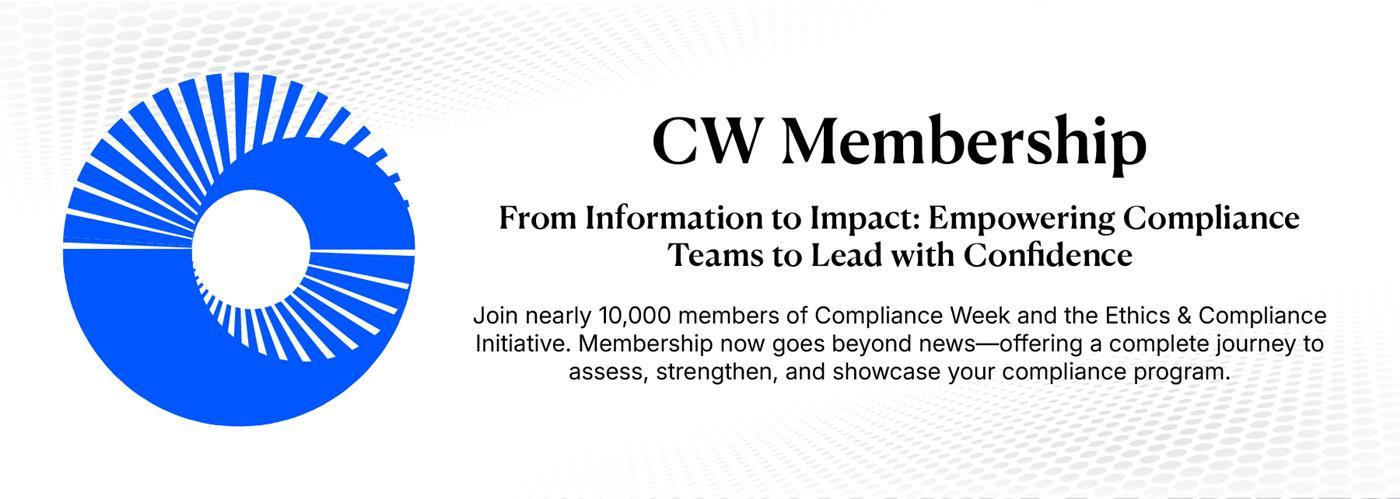- Home
-
News
- Back to parent navigation item
- News
- National Compliance Officer Day 2025
- Accounting & Auditing
- AI
- AML
- Anti-Bribery
- Best Practices
- Boards & Shareholders
- Cryptocurrency and Digital Assets
- Culture
- ESG/Social Responsibility
- Ethics & Culture
- Europe
- Financial Services
- Internal Controls
- Regulatory Enforcement
- Regulatory Policy
- Risk Management
- Sanctions
- Surveys & Benchmarking
- Supply Chain
- Third Party Risk
- Whistleblowers
- Opinion
- Benchmarking
- Certification
- Events
- Research
- Awards
-
CW Connect
- Back to parent navigation item
- CW Connect
- Sign In
- Apply
- Membership
Six veteran CCOs, 5 questions: Improving your compliance training
By Compliance Week2020-02-13T15:50:00

Six senior compliance practitioners offer their perspectives on what makes for an effective training program and share tips and guidance for companies looking to enhance their education initiatives.
THIS IS MEMBERS-ONLY CONTENT
You are not logged in and do not have access to members-only content.
If you are already a registered user or a member, SIGN IN now.
Related articles
-
 Article
ArticleReports: Ex-AB InBev compliance exec to join DOJ’s Fraud Section
2022-09-09T20:07:00Z By Jeff Dale
Matt Galvin, the former head of compliance at macro brewer Anheuser-Busch InBev, has been tapped by the Department of Justice to join its Fraud Section as a compliance and data analytics counsel, according to multiple reports.
-
 Article
ArticleBest practices for customized digital compliance training
2020-12-16T18:50:00Z By Anusia E. Gillespie, CW guest columnist
Today’s volatile market, coupled with the increasing willingness of subject matter experts to collaborate, changes the game in some areas, where “build” starts to make more sense than “buy.” One area is digital compliance training.
-
 Premium
PremiumAsk a CCO: What will compliance look like in 5 years?
2020-09-30T16:57:00Z By Compliance Week
We asked nine prominent chief compliance officers to look into their crystal balls, and all of them saw data and advanced technology playing a larger role in the future of the profession.
More from Training
-
 Article
ArticleCreating impactful compliance training
2023-07-06T15:28:00Z By Jon Prentice, International Compliance Association
Speakers as part of a webinar hosted by the International Compliance Association discuss practical tips for engaging learners via compliance training beyond the traditional tick-box approach.
-
 Premium
PremiumHow ‘Star Wars’ references in E&C training can help employees avoid the dark side
2023-05-25T12:00:00Z By Jeff Dale
Compliance practitioners learned how to become ethical Jedi masters during a panel discussion on integrating pop culture into training at Compliance Week’s 2023 National Conference.
-
 Article
ArticleUpdated DOJ guidance stresses need for data in compliance training
2021-05-13T18:09:00Z By Kyle Brasseur
An expert panel at CW’s 2021 National Conference discussed the importance for companies to embrace behavioral analytics in their training programs to align with updates to the DOJ’s “Evaluation of Corporate Compliance Programs” guidance.
- Terms and Conditions
- Privacy Policy
- Do Not Sell My Info
- © 2025 Compliance Week
Site powered by Webvision Cloud






